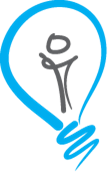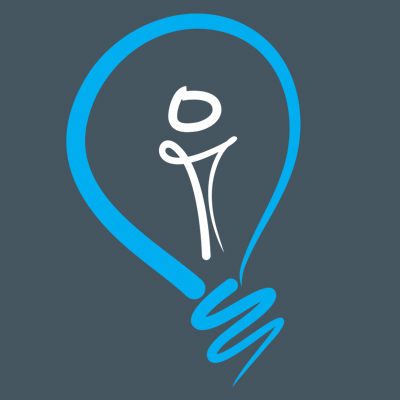
20 Apr Eight steps for creating high-converting landing pages
As one of the very first touch points you have with your prospects, a landing page is an opportunity to demonstrate the value of your product or service and earn your prospect’s trust from day 1.
According to Gartner Digital Markets research, 48% of visitors leave a landing page without engaging with any other marketing material on the website. It’s also estimated that you have just 5-10 seconds to convince your visitors to stay on your landing page before they bounce, so the stakes are high.
This critical part of your sales funnel needs to engage visitors, communicate your value, and convert the right prospects into customers – all in as few words as possible.
Here are our eight tips for a landing page that converts.
1. Communicate value using headlines and sub-headings.
Buyers can find it hard to differentiate between competing products with similar features and services, so it is essential to communicate your key differentiators from the start. An effective headline and sub-heading should get prospects interested in your product or service and tell them why they should care.
- Headline: pinpoint the value you’re offering in one short sentence. Include a mention of your product or audience.
- Sub-heading: A specific explanation of what you offer, for whom, and why it’s useful.
2. Highlight benefits before features.
Any form of persuasive writing follows the same rule: highlight the benefits first, then use the features to back up your claims. The benefits speak directly to the problems and challenges your buyers face, so focusing on these will show visitors how your offering will improve their current situation.
3. Create simple, easy-to-skim copy
Your prospects are busy, and attention spans are short, so keeping your landing page simple is essential. Copy that is easy to skim, read and understand is more likely to convert.
When buyers scan a landing page, they look for information relevant to them and their situation. Action-orientated language helps to quickly highlight the benefit to the buyer, for example, ‘learn how to…’ or ‘see examples of…’.
Usually, 3-5 short bullet points are enough to detail the value you are promising through the primary offer.
4. Include customer testimonials to build trust.
Your landing page can build authority for your brand by showing visitors how others have benefited from your product or service. Testimonials could be in any form, such as customer ratings, reviews, social media comments or messages from relatable people or sources. Real-world evidence of how your product or service has helped businesses like them helps form an emotional connection that resonates beyond regular promotional copy.
As this is one of your first touch points with your prospects, authentic social proof allows them to associate with your brand positively and builds trust, increasing the chance of them coming back – even if they don’t opt-in at that moment.
5. Use visuals to tell the story.
We know a prospect’s time on a landing page is short, so visuals can help communicate a tone or emotion quickly. You might consider landing page visuals such as headers and banners, a thumbnail of downloadable content, or a webinar speaker’s headshot. Whatever the visuals, make sure they tell the same story as your words.
6. Write a compelling call-to-action.
Your call-to-action (CTA) needs to be front and centre, easy to spot, and easy to use. Leave no room for confusion about where your prospect should click next.
An effective CTA should be:
- Action-orientated: describe the desired action and clearly define what they get in exchange. For example, ‘register for webinar’ or ‘download white paper’.
- Eye-catching: make them visually stand out from the rest of the page and in a prominent place so the visitor doesn’t need to scroll to act.
- Convincing: create a sense of urgency, emphasising the value of acting and the consequences of not.
7. Maintain message and visual continuity.
A clear, distinct message delivered consistently across all your campaign elements will drive deeper engagement with buyers and compel them to move further into their buying journey.
From ad impression and email to the landing page and lead generation form, it is essential to maintain consistency in all elements of your digital marketing campaign to lock down a prospect long-term. This includes visual elements, such as consistent graphic style, fonts and logos, as well as your copy. It is therefore important to nail down brand voice and messaging with all the team members working across your marketing campaigns and channels.
8. Follow up with a thank you page.
The thank you page can be seen as the last step in the conversion process, but the first step for customer retention. It is an opportunity to demonstrate appreciation towards your leads, prospects and customers for taking a desired action and even potentially convert users or increase sales through additional CTAs.
Whether linking to your webpage or socials or offering additional content, your thank you page is a great place to convince your visitor to take another action while they’re already engaged and build that positive brand association.
Whatever your business, a properly targeted and well–constructed landing page is essential for building trust and initiating that key relationship with a prospect. Incognate’s Reach model incorporates landing page content to actively convert that initial interest into engagement. Contact us today to see how we can help you and your business.
Some of our insights that might interest you
-
Why do your B2B demand generation campaigns fail?
All too often, outbound B2B demand generation campaigns fall short of their goals. Incognate’s CEO, John Bancroft, provi...
23 July, 2024 -
A new approach to insides sales
Discover a cost-effective approach to inside sales that optimises resources and maximises ROI. Learn how leveraging exte...
10 July, 2024 -
Unlocking success in B2B email marketing engagement for 2024: Adapting to shifting work trends
In a rapidly evolving B2B landscape, adapt to shifting work trends and skyrocket your email outreach success. Discover 5...
22 January, 2024 -
5 ways to boost your B2B email engagement
As the competition to get your emails read above others rages, how can you improve your email open rates and clicks? In ...
27 November, 2023








